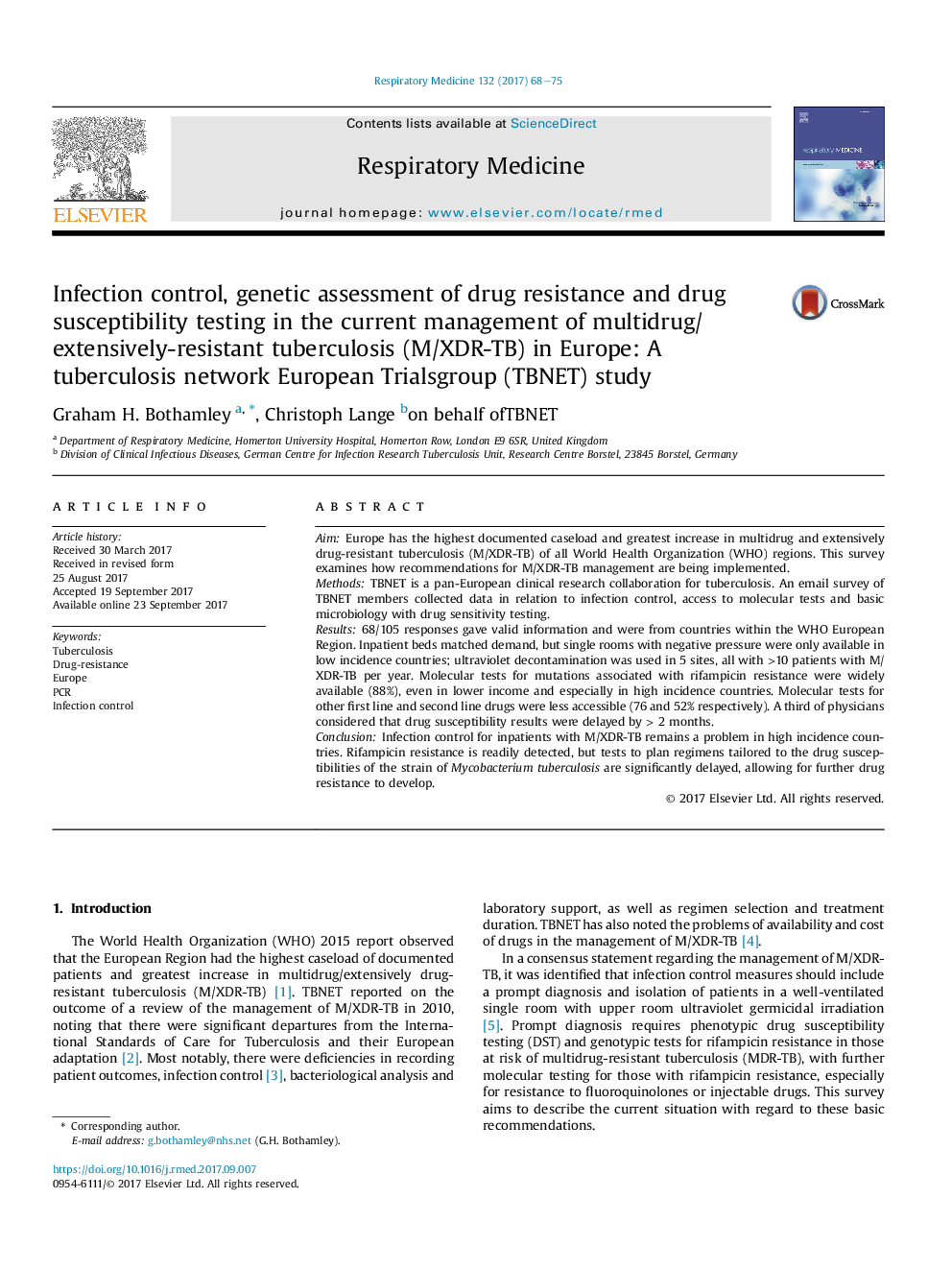| Article ID | Journal | Published Year | Pages | File Type |
|---|---|---|---|---|
| 5724799 | Respiratory Medicine | 2017 | 8 Pages |
â¢M/XDR-TB poses a serious threat to TB control in Europe.â¢Isolation rooms are insufficient for safe diagnosis.â¢Drug susceptibility testing results are frequently delayed.â¢A positive test for rifampicin resistance should lead automatically to tests for other first- and second-line drug resistance.
AimEurope has the highest documented caseload and greatest increase in multidrug and extensively drug-resistant tuberculosis (M/XDR-TB) of all World Health Organization (WHO) regions. This survey examines how recommendations for M/XDR-TB management are being implemented.MethodsTBNET is a pan-European clinical research collaboration for tuberculosis. An email survey of TBNET members collected data in relation to infection control, access to molecular tests and basic microbiology with drug sensitivity testing.Results68/105 responses gave valid information and were from countries within the WHO European Region. Inpatient beds matched demand, but single rooms with negative pressure were only available in low incidence countries; ultraviolet decontamination was used in 5 sites, all with >10 patients with M/XDR-TB per year. Molecular tests for mutations associated with rifampicin resistance were widely available (88%), even in lower income and especially in high incidence countries. Molecular tests for other first line and second line drugs were less accessible (76 and 52% respectively). A third of physicians considered that drug susceptibility results were delayed by > 2 months.ConclusionInfection control for inpatients with M/XDR-TB remains a problem in high incidence countries. Rifampicin resistance is readily detected, but tests to plan regimens tailored to the drug susceptibilities of the strain of Mycobacterium tuberculosis are significantly delayed, allowing for further drug resistance to develop.
